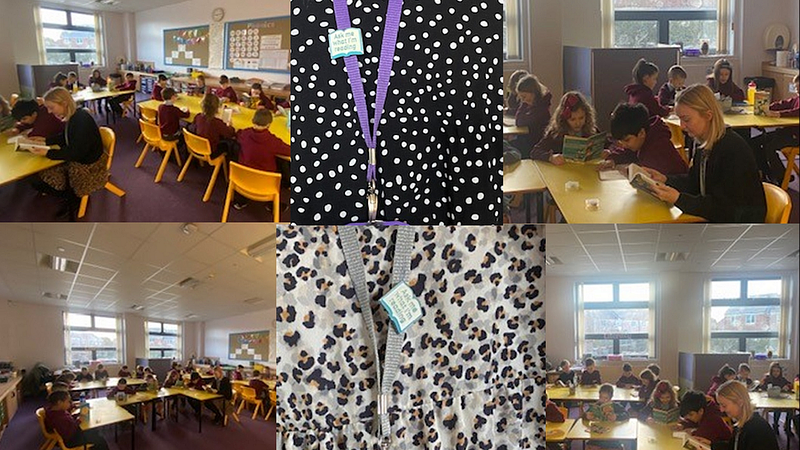Staff being seen as readers themselves at St. Vincent's primary school
Read our community success story for ideas on how to show staff role modelling on your Reading Schools journey

While working through their Core accreditation, St Vincent's Primary School saw how powerful staff role modelling can be in building a reading for pleasure culture. We were so impressed, we asked them to share their tips for the Reading Schools community.
Reading for pleasure had always been encouraged at St. Vincent's but, after COVID, when children had spent more hours than usual on Nintendo Switches and Play Stations, we decided to further promote reading for pleasure and work towards achieving our Core Level accreditation with Reading Schools. It has been a wonderful journey to be part of, and our learners are now keener than ever to read, share their love of a book in a Book Blether and can be heard recommending one author or another to friends.
Taking the time
With the purchase of a plethora of new and contemporary fiction the children were off and running but then came the hard part; encouraging teachers to stop and read in class and engage with diverse children's literature. It is very easy to use our early morning reading slot to complete any admin or use this time to work 1:1 with a learner but what we really wanted was for our teachers to engage with a text, allowing children to see them relaxed and lost in a book. Children identifying teachers as readers is crucial to the success of this journey.
Book blethers
Once this was established, we encouraged Book Talk at the end of the sessions which fondly became known as Book Blethers. This is where teachers created frequent opportunities for discussions with their class, small groups or individuals about texts, authors, preferences, interests and so forth. Consequently, teachers found that children began to make time to talk to each other about reading and more spontaneous child-led talk emerged. The advantages of Book Blethers were two-fold. Teachers became more aware of the types of books their learners were interested in and by consequence teachers became more conscious of, and confident in, their knowledge of children's literature. Teachers then began to make book recommendations to learners rather than just telling them to choose another book.
Changing the school culture
All staff and pupils now wear 'Ask me what I'm Reading' badges and I have been stopped many a time and asked what the book I am reading is about. On every classroom and office door we display signs telling others what book we are currently reading. There is a growing enthusiasm for book talk amongst staff in the staffroom, at the beginning of meetings and at lunchtime book clubs.
After the holidays, one of our support assistants brought her summer reading books into the classroom to show how much she loved reading. The children noticed that her books were predominantly set at the seaside and a conversation about why she liked this type of book began. A lengthier conversation about choosing books based on front covers ensued.
The reading for pleasure pedagogy which developed in our school is a culmination of; improvements in reading environments, a wider selection of more diverse texts, learners and staff reading daily for a sustained amount of time and quality provision for teachers to read aloud. Nevertheless, the importance of staff role modelling reading across the school and participating as equals in sporadic book talk with children is by far the most powerful shift we have encountered in our Reading Journey.
Good luck on your journey and be sure to take a book!
Yvonne Boyle
Currently reading the Children's book 'Along Walk to Water' by Linda Sue Park
Related resources
Printable resources
We have some great printable resources you might be interested in.

